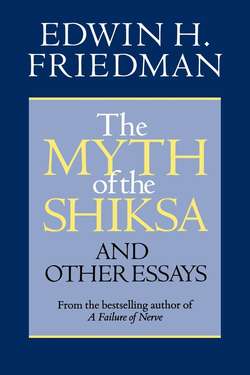Читать книгу The Myth of the Shiksa and Other Essays - Edwin H. Friedman - Страница 18
На сайте Литреса книга снята с продажи.
The Other Side
ОглавлениеThere is, of course, another side to the portrait I am painting of a world in which fundamental change is so unusual. During the past thirty years, we have all lived through a time of profound changes. Here are three brief vignettes of striking changes — one social, one political, and one from our own field — that stand out for me.
I will never forget a recent visit to a South Carolina town that back in the 1960s had fought bitterly against blacks and whites even using the same drinking fountains. My first night I went to a restaurant and found it filled with interracial couples. But that was not the greatest shock. What was everyone eating in this one-time bastion of the Deep South’s resistance to any alteration of its tradition? Sushi!
The McCarthy era is now notorious for the hysteria that gripped public opinion and the way people’s careers were destroyed because of “undesirable associations.” One of my closest friends is a lawyer who defended all kinds of unpopular causes, including the Hollywood Ten, in the worst witch hunts of the early 1950s. Then in the 1970s, just before Watergate broke, Charles Colson joined his law firm. Being on the blind side of justice, my friend took his new partner’s case when Colson became involved in the investigation. When my friend tried to counter the pre-judging efforts of the local press, he suddenly found many of his long-term, liberal friends refusing to associate with him. In the midst of that, I said to him, “Things really have turned around, haven’t they?” “Hell, no,” he responded, “I’m still on the same side.”
When I first entered the field of psychotherapy a generation ago, family therapy was, at best, an obscure elective in social work schools. I decided to launch myself by sending a letter to physicians in my community announcing that I was going to start a counseling and consultation service. My naive idea was to help people find sources of counseling, the field then being so unfamiliar to the average lay person. I was immediately reported to the State Board of Medicine for conduct unbecoming a lay person. The charge, in fact, was that I was guilty of practicing medicine. The ostensible upset was that I had used the word “diagnosis” in my brochure (ironically a word I would never have used a few years later), and the act of diagnosing, according to some members of the local medical society, was a medical activity.
I tried, at first, to point out to the blue-ribbon committee selected to meet with me and my attorney that every Sears in town had a diagnostic center, but to no avail. Eventually, they agreed over a bottle of Jack Daniels to let me alone, if I would only stop using that word, and, of course, the brochure that contained it. Several years before, the first president of the American Association of Pastoral Counseling had been similarly challenged by the local psychoanalytic society because he had people lie down on a couch during therapy. That conflict was also resolved by compromise; he agreed only to do therapy with people when they were sitting up.
All this may sound absurd today at a time when analysts, representing an ever smaller percentage of therapists, seem like an endangered species. (These days they even submit papers for presentation at AAMFT conferences.) Today their chutzpa at trying to corner the market in therapy seems a bit ludicrous. But back when that was happening no one could have envisioned in his wildest dreams that the psychoanalytic dominance of the therapy world would decline so precipitously.
Each of these vignettes touches on the basic paradox of change. Despite human beings’ extraordinary ability to maintain the status quo, the world keeps throwing the unanticipated developments our way that sometimes thwart our extraordinary talents for resisting change. For professional helpers the important point is that the more deliberately intended the attempt to bring about change, the more easily the resistance demons are triggered.
